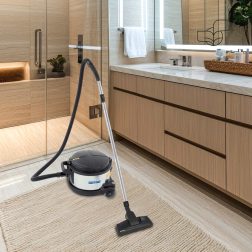Subtotal: $849.00

ENVIRONMENTAL HEALTH IS THE MISSING PIECE TO THE HOLISTIC WELLNESS PIe
Environmental
Physical
Mental
Environmental & air quality is the missing piece of the pie for holistic health
Experiencing Wellness at a Deeper Level
You’ve crafted the ideal diet plan. You’re performing daily physical activity. You’ve started integrating self-care. You’re sleeping the recommended number of hours a night.
But there’s another piece to the health paradigm…
Exercising, drinking water, getting enough rest, and eating a balanced diet won’t have as positive an effect if you’re living in a toxic environment.
Indoor Environmental Wellness
The average person breathes 20,000 breaths daily and spends around 90% of their time indoors. Yet our indoor environments are often the last place we consider (if at all) as an element of healthy living. As one of the greatest routes of exposure we face, indoor air quality has the ability to foster our overall wellness or negatively impact it.
A toxic environment can cause both mental and physical health issues.
Prevention…
Breathing in contaminated air forces the body to fight a constant battle as it tries to eliminate the steady stream of toxins. This can cancel out the benefits of getting enough rest and eating a healthy diet because the body is struggling just to maintain balance.
Reducing environmental exposures and actively promoting safe indoor air quality allows the other pieces of the wellness puzzle to fall into place. Collectively, these segments of the holistic health pie will allow you to live a happier and healthier life.
Taking care of self includes taking care of indoor air. Proactive prevention is part of experiencing wellness at a deeper level.
Healing…
Treat the cause, not the symptom.
Finding the root cause is key to healing. Instead of accepting chronic symptoms, it’s time we started figuring out what’s triggering them in the first place. Our bodies will sound the alarm when something is causing us harm. Those symptoms are the flashing lights and blaring alarms. It’s up to us to listen to these signals and work to figure out what’s wrong so that it can be fixed.
Far too many people are suffering from chronic symptoms due to indoor environmental exposures. The question is whether potential exposures are brought into the diagnosis conversation. These reactions will not cease until that exposure ends. Ending this worldwide epidemic means we must look at all the pieces of the puzzle, including problems in our environment.

 EuroClean 4 Gallon Hepa Vacuum
EuroClean 4 Gallon Hepa Vacuum